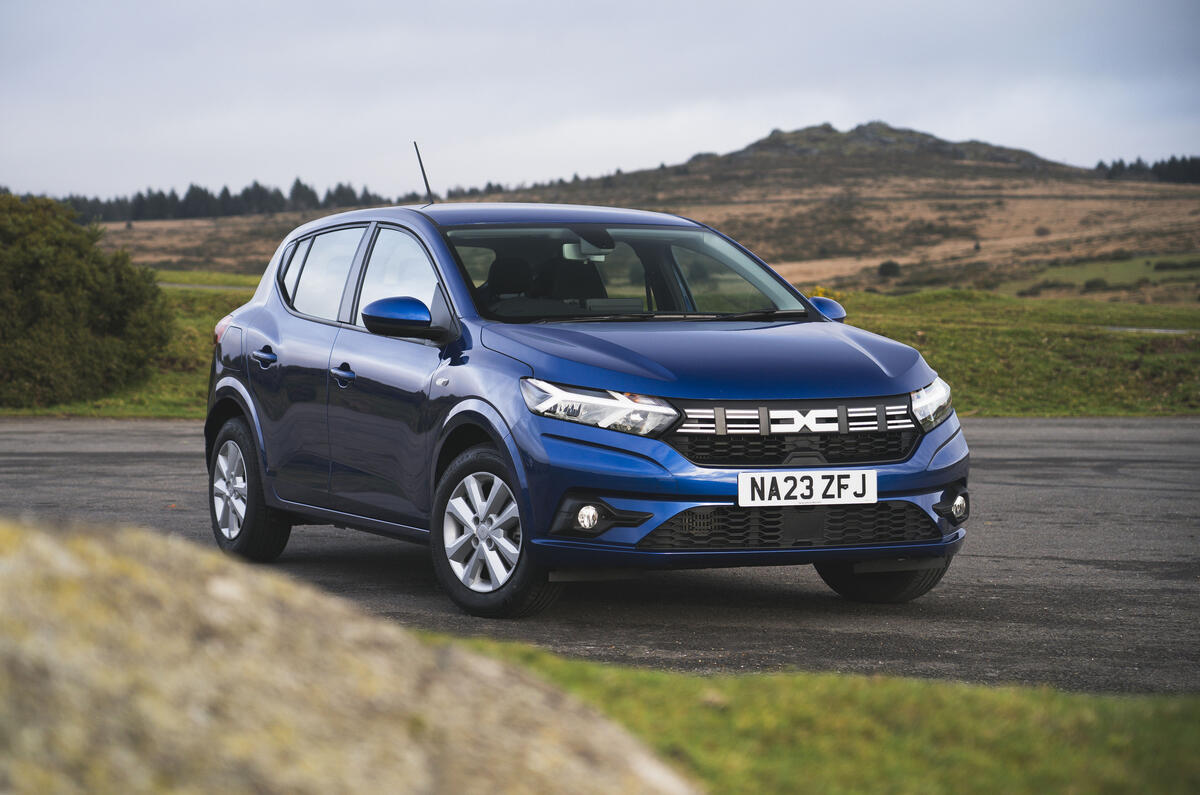The next-generation Dacia Sandero will retain its conventional hatchback shape even as it gains an electric option and is restyled with influence from the chunky Duster and Bigster SUVs.
Due in 2027, the next-generation Sandero will be a heavy evolution of today’s car, remaining atop the Renault Group’s CMF-B architecture - which will allow it to retain combustion power while adding an electric option.
Speaking to Autocar at the Brussels motor show, Dacia design boss David Durand acknowledged that while the brand’s design language is increasingly off-road-influenced in its chunkiness and utilitarianism, there are no plans for Dacia to become a pure-SUV brand, and it will not give the Sandero an overtly rugged makeover and a suspension lift for its second outing.
"It's true that the outdoor and very strong formal language fits perfectly well, but nothing is forbidden, and I think something that's important for us and for the Sandero is not showing off too much. It's a very serious and well-made car, and it fits a lot of customers like that.
"It's not so easy to innovate on every body type, and the hatch is very well known by customers, and this is what they need: a car which has a lot of roominess, which is really part of the DNA of Dacia, and compact at the same time, because it's easy to park, easy to drive, not too heavy, not too high-consumption. So the hatch is the good solution.
"We also have to face CO2 emissions, so aerodynamics [are important], and we take all of that into account to continue to tick the box that this very essential and central car in our range is covering."
Asked whether Dacia will turn the Sandero into a mini-SUV like the new Citroën C3, Durand said: "No. Redesign, of course, but the body type is a hatch."
He added that the higher-riding, off-road-flavoured Sandero Stepway is seen as almost an entirely separate model from the standard Sandero and it is important to maintain that distinction going into the next generation.
"We have noticed that Sandero owners are not hesitating over the Stepway. They’re coming to buy a Sandero, and people coming for the Stepway are not considering Sandero at all. So we are talking to different people, and so we have to take everybody into account and understand that some people just need a good car, not showing off too much."
Asked whether Dacia could consider differentiating the two model lines more overtly, he said: "We could have a separated Stepway or more differentiation between them, but the fact that we are using a lot of common parts between the two cars and we are really using the same base is also part of the ingredients to make the costs low. We could say 'okay, we will make two different cars', but we will have to double the investment, and people at the end will pay it somewhere."








Join the debate
Add your comment
Oh no!!!Anyway
There's 76mm difference in height between the two, I can't believe people are in such a hang up about THBs.